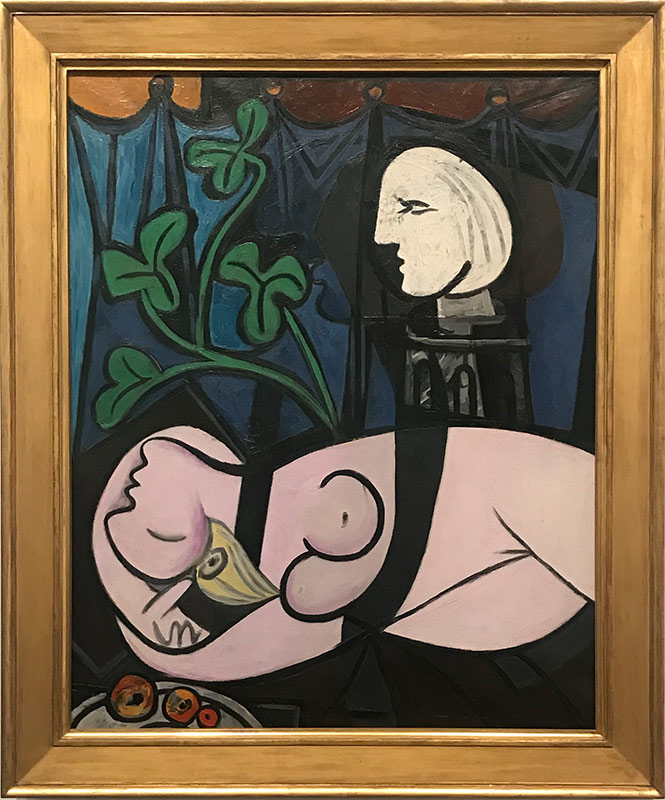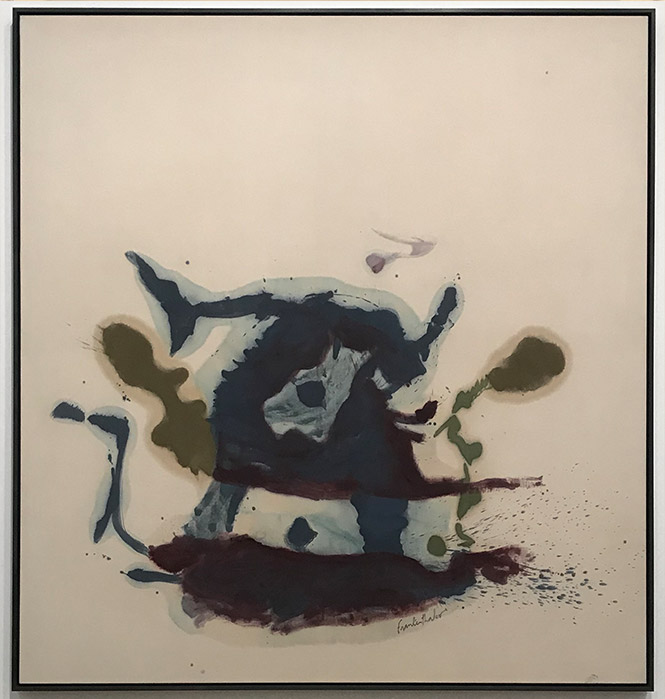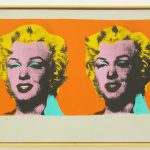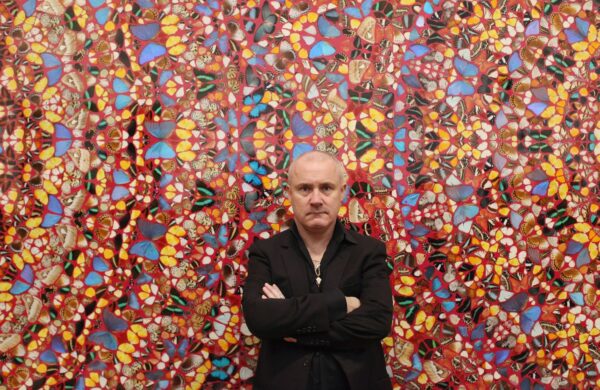In today’s article, we are going to deal with the distinction between modern and contemporary art, as it is made by art historians. Namely, despite the vernacular use of the term and even some well-known resources not making the distinctions.
There is a difference between modern and contemporary art and we are going to show them so you can actually know how to use the terms in writing and conversation.
12 difference between Contemporary and Modern art that matter:
- Time
- Paradigms
- Framework
- Materials
- Themes
- Conceptualization
- Forms
- Engagement
- Interdisciplinarity
- Availability
- Simplicity or complexity
- Relationship with history
The term “modern art” is one of the most complex terms in the discipline of art history. Why? Simply because it is very complex to define and there is no agreed-upon definition of the term. Rather, there are two “currents”, one which defines modern art as a long historical period that still lasts, and the other which distinguishes modern and contemporary art. In every-day English, the term “modern art” usually corresponds with the notions of the first “current”.
Keep reading to find out more!
What is considered modern art?

The famous Encyclopædia Britannica (1) defines modern art as “painting, sculpture, architecture, and graphic arts characteristic of the 20th and 21st centuries and the latter part of the 19th century”. As we can see, one of the most famous encyclopedias in the world uses the broader definition of the term modern art, defining it as practically every movement starting with romanticism and still continuing to this day. This is a very simplified definition of modern art that accompanies a lot of completely different approaches to art (you can hardly compare the artistic ideas of constructivism or orphism with those of photorealism or socialist realism).
This is why we disagree with the proposed definition.
For us, modern art is the complete artistic production extending roughly from the 1860s to the 1970s, although a more precise limit would be the 1950s. These dates aren’t, of course, set in stone (they’re not the Battle of Waterloo fought in 1815), as is with most artistic periods and different styles and artistic ideas (or ideologies) actually overlap, so you shouldn’t look at the dates conservatively. Modern art is distinguished by its new and innovative approach to the arts. Modern art was a truly changing movement that redefined artistic ideas, materials, themes and even the functions of art itself. Although pre-modern art developed stylistically (from the perfection of Ancient art, through the stylization of Medieval art, to the pompousness of the baroque), things haven’t changed much in how art was executed and perceived. Modernists changed that. They redefined art and began experimenting, changing not only the basic execution of art, but also its function.
Thus, Romanticism started experimenting with subjects and themes never seen before, while also connecting art with the liberal revolutions in 19th century Europe. Realism was the first movement that wanted to portray reality as it was – ugly, common, without any stylization. Impressionists and post-impressionists redefined art and added a lot of philosophy to the interpretation of their works, which now served a higher artistic purpose, rather than just being works of art. This aesthetic philosophy was brilliantly explained by the Italian philosopher and critic, Benedetto Croce, in his book Breviario di Estetica (1913). Avant-garde movements and abstract art completely changed art and gave it a new look, even a new purpose, stating for the first time in history that even something superficially incomprehensible can be art, with a deep philosophical and artistic purpose.
Although modern art is perceived to last until the 1970s, not much innovation was presented since after the 1950s and a lot of the movements were just reinventions of earlier ideas with something new and artist-orientated.
What is considered contemporary art?

Not all art historians agree that contemporary art actually exist, as they consider it to be a part of modern art. But we are not among them. We firmly believe that modern art ended around the middle of the 20th century, which is when contemporary art beings. So, contemporary art can be viewed as the artistic production of the second half of the 20th century and the 21st century.
Contemporary art is different from modern art. Whatever someone says – it just is. We are going to analyze the reasons in more detail in the following paragraphs, but the difference is dogmatically very, very different. Modern art aimed to redefine art, its execution and its function. It wanted to remain in the general framework of classical art, but change how that framework is perceived. This is why we value impressionism, expressionism, abstract art, neoplasticism, abstract expressionism and all the other movements from that period as revolutionary artistic ideas. They were still “classical” art in the broadest sense, but they were almost essentially different from their predecessors.
Since art had to evolve and the artists didn’t just want to imitate their predecessors and influences, they had to create something new. There wasn’t really that much space for a new form of artistic expression within the boundaries of “classical” art, because the modernists practically did everything that was possible. So, in order to be creative and original, the contemporary artists had to redefine the framework itself, i.e., the artwork.
Contemporary artists relied less on tradition and began experimenting with what they could. They used new materials, they combined previously unused materials into new ones and they used technology to create art. They relied heavily on the new, globalized and culturally diverse world to create new, interdisciplinary art forms. Although traditional techniques were kept, they were redefined and molded into new forms in accordance with the experimental nature of contemporary art. Art also became increasingly engaged, transforming from a mere l’art pour l’art creation to a weapon of political and social progress.
As time passed, contemporary art became increasingly conceptual (although conceptual art is not a synonym for contemporary art), relying more on the philosophical, political or social symbolism of work than on its intrinsic (i.e., traditionalist) artistic value. Art became a message, but whether that message remained purely artistic or morphed into something much bigger now depends on the artist, the work and the context in which it was made and presented to the public.
Although generally considered to begin not before the 1950s, some art historians consider the first work of contemporary art to be Marcel Duchamp’s Fountain (1917), a conceptual/Dadaist work created during one of the peaks of artistic modernism.
What is similar between contemporary art and modern art?
While their differences are going to be the focus of our article, we have to say something about the common points that modern and contemporary art share.
The first common point they share is their revolutionary nature. Namely, both modern and contemporary art changed the artistic paradigm of their respective times. When modern art replaced the so-called “classical” art, it redefined how art was perceived and created. It worked within the same framework, but it did wonders within. From the romantic pathos to the “action painting” of Jackson Pollock, modernism completely changed art and showed the public that art doesn’t have to be a proportional portrait of a political figurehead or a beautiful woman, but also a series of colorful geometrical shapes and random splashes of paint on a large canvas. This art was symbolic and was the embodiment of the artist’s internal beauty and inspiration. On the other hand, contemporary art went even further, outside the framework, redefining the artwork itself. A dot on a large canvas, a completely black canvas or an egg on a public square – all of that became art, because contemporary artists refused to be restrained by the traditional framework. Anything that they could assign artistic value to could become art, which practically turned art into a limitless phenomenon. The revolutionary nature is evident – modernism revolutionized art, while contemporary art revolutionized the artwork.
The second common point is the historical moment. Namely, both movements appeared during a period of change. Modernism started off during a period of turbulence in Europe, peaking during the interwar period, when the whole world wanted something new to forget the horrors of World War I. Contemporary art started emerging after World War II and during the Cold War, again as a reaction to important historical and social movements. Plus, there is a two-decade period when the two movements intertwined (1950s – 1970s), influencing each other directly.
Innovation is another common point between the two movements. Artistic innovation is a common element in the history of art, but the fact is that both modernism and contemporary art changed a lot. Modernists started using new or then-obsolete techniques, they provided the artistic community with new approaches, new ideas and new themes, but also with some new techniques, especially in the fields of sculpture and architecture; the painters mostly contributed with their themes and styles. As for contemporary artists, they started using completely new materials and their mixtures, creating works of art whose likes had never been seen before that. Good examples of such innovations are video art and the assemblage technique used by the Neo-Dada movement.
These are the three main common points, the similarities between modern and contemporary art. These are not all of them, but other smaller similarities can easily be paired with some of these so there’s no need to analyze each one of them separately. Now, we can start our list of the main differences between modern and contemporary art.
Difference between Contemporary and Modern art that matter
This is a list of the main differences between modern and contemporary art:
1. Time
The first obvious difference is their chronology. Considering the fact that we are distinguishing modernism as an artistic movement separate from contemporary art, we can easily deduce that these two movements don’t historically overlap. As stated above, modern art started around the 1860s, with romanticism being the first modern artistical movement in the world. Painters like Eugène Delacroix, Francisco Goya and William Blake were all fathers of modern art. Modern art ceased to work sometime during the 1970s, although it had been slowly but effectively replaced by contemporary art as early as the 1950s, which is the decade when contemporary art is considered to have started.
2. Paradigms
The two movements also functioned on different paradigms and artistic doctrines. And while both had a large number of different styles, the stylistic pluralism of modernism was very different from the stylistic pluralism of contemporary art. Namely, the main paradigm of modernism was to redefine art, so all of the styles wanted to create something new within a known set of “rules”, an artistic idea where art wasn’t just something already seen but reworked. This is why some of the styles were so revolutionary, but in retrospect – all of modernism’s styles were based either on the revolutionary stylization of post-impressionistic styles (including the avant-garde) or on Kandinsky’s abstract art. They were plural, but they had two distinct origins. Contemporary art, on the other hand, developed on the paradigm that the artwork – and not art – must be redefined, thus creating something completely new. The stylistic pluralism of contemporary art is much more diverse than that of modernism, with Neo-Dada, op art, hyperrealism and performance art all being part of the same, large artistic movement that is contemporary art. This is how their paradigms, although similar, are still largely different.
3. Framework
The framework within which these two movements developed are largely different. Modernism was based on a traditional artistic framework, opting to redefine it from within to create a different impression on the outside. This was a large part of the philosophical doctrines of almost all modernist styles. But why is that? Namely, when modernism developed (whether you, like us, consider it to have started with romanticism or, like some, with impressionism), the preceding style was either neoclassicism or realism, however you want to perceive it. Modernist worked within a traditional framework because it was all that art knew at the time, which makes their contribution even greater, as they managed to do so much with “old toys”. Contemporary art, on the other hand, worked within the framework created by modernism, so they just needed to upgrade an already “new toy” in that aspect. Contemporary artists could learn from revolutionaries such as Picasso, Dalí, Mondrian, Kandinsky, Malevich, Pollock, Matisse, de Kooning, Magritte and others, which actually means that the framework they had to change was very, very different from the one modernists worked with.
4. Materials
Initially, modernists had to work with traditional materials. They experimented with the techniques – e.g. Monet’s dreamy impressionism, the fauvist’s unorthodox coloration, Van Gogh’s brushwork, or Seurat’s dots – but the materials were largely the same. Some experiments were made in later phases – cubists experimented with collages, constructivists with metal – but the only true innovative materials in modernism were used by the sculptors and architects of late modernism. Contemporary artists, on the other hand, completely reinvented what could be perceived as artistic materials, using completely new ones and previously unimaginable mixtures of materials. Everyday objects became materials, people themselves even, and the conceptualism of a lot of contemporary styles absolutely contributed to the innovations in the field of materials.
5. Themes
As far as the themes are concerned, modernists – for a large part – still worked with traditional themes, but redefined them in accordance with their artistic doctrine. Modernists liked portraits, still life, and while they did focus on painting everyday scenes more than their predecessors, not many of them – with the exception of, for example, Picasso’s Guernica and some openly ideologized avant-garde movements such as constructivism, Dadaism and others like socialist realism – chose new themes. Even abstract artists and their compositions don’t fit into the category of new themes, as the compositions were themes themselves. Contemporary artists, on the other hand, became more socially and politically engaged, choosing to comment on the daily turbulences of the quickly-changing political and social situations of the Cold War and post-Cold War society. Contemporary artists also chose to conceptualize their arts, meaning that the themes became more symbolic and metaphoric, which was not the case with modernist styles.
6. Conceptualization
The much-mentioned conceptualization is a characteristic of a large number of contemporary styles. Although not part of all styles, the term conceptual art is most exclusively associated with contemporary art. Conceptual works weren’t just works per se, it wasn’t the classical ars gratia artis; they became concepts, metaphors of something much larger or something much more intimate than what was shown. Whether it was a “classical” work or some performance art – just think of Marina Abramović – contemporary art is largely conceptual and the process of deciphering it is wonderful. Modernist art, on the other hand, wasn’t conceptual, it was straightforward in that aspect, both in themes and in its execution. There is symbolism, very deep symbolism in fact, but it is far from any conceptualization and the whole idea is still in accordance with Gautier’s principle of l’art pour l’art.
7. Forms
Modernist art didn’t do much as far as artistic forms were concerned. Although some newer forms were popularized – for example posters or film animation – it was all pretty much traditional painting, sculpture and architecture. Contemporary art changed that paradigm and popularized different forms of expression as art. Graffiti, photography, video art, performance art, assemblage – these are just some of the new forms of art utilized by contemporary artists. Some of them have been known since modernism, but either weren’t used much or weren’t used for artistic purposes, while some are completely new. Contemporary art raised the bar to a completely new level when art forms are concerned, which was an interesting step forward in the evolution of art.
8. Engagement
Contemporary art is much more engaged than modernist art. Modern art, as was stated, was much more artistic, despite its revolutionary nature. These artists wanted to create art – they did not want to convey a message. There were, of course, exceptions. Picasso’s Guernica sent a powerful sociopolitical message when it was first presented to the public. The Dadaist movement sent a strong social message and tried to change the perception of almost everything. A lot of early surrealists had close ties with socialism – especially Breton, even Buñuel – while socialist realism was wholly based on advocating socialist values. Constructivism also had very close political ties, among other leftist avant-garde movements. But these were, truly, exceptions – Picasso’s whole opus was mostly artistic, surrealism wasn’t an ideological movement (see Dalí), while the political movements were a minority compared to others. Contemporary art, on the other hand, tends to blend social and political comments with art. The majority of contemporary works tries to send a message, mostly one of progress and evolution. Just remember Vrubel’s famous Fraternal Kiss graffiti depicting the famous kiss between Leonid Brezhnev and Erich Honecker or some of Banksy’s performances. These are just some examples of the strong sociopolitical engagement contemporary artists have.
9. Interdisciplinarity
Referring back to point seven, we can state that modernist art was rarely interdisciplinary in its nature; this is also somewhat related to point eight. Modernists valued art and didn’t mix that much. Painting was a painting, a sculpture was a sculpture. And that’s how it usually played out. Contemporary artists redefined such paradigms and valued interdisciplinarity, which is a consequence of the growing influence of postmodernism. Technological advancements enabled us to create art with the use of technology, while artists managed to combine their art with other fields of creative output. The term “video game as art” is just one example of that interdisciplinary nature, as some video game creators opted for a full-on artistic approach and experience rather than just present a gaming experience. A lot of art has been implemented in modern movies – even those that aren’t experimental, indie or art films – and there are lots of other examples we cannot analyze completely in this article, but that prove that contemporary art is much more interdisciplinary in nature than modernist art.
10. Availability
Some of you may see it as “bagatellization” of art, but however you perceive it – art is much more available today than it was before. Modernist artists had to have ateliers, they had to buy expensive material, even travel a lot to experience certain themes and that wasn’t available to most people. Today, with the development of globalization and technology, art became a standard. All you need is your talent and some basic resources, since there are different forms of art you can choose. You can be a street artist with a can of paint or spray paint. You can be a video artist with some good software. Or, you can be a good photographer with one investment in a good camera. You have so much to chose from and the possibilities are nigh endless. This is why contemporary art is far more available than modern art ever was, which is a good thing because more talented people can get an opportunity to show their art to the world.
11. Simplicity or complexity?
Modernist art was largely complex. And while some of the canvases or statues might look simpler, they’re usually not. Since modern art still developed on the foundations of traditional art – and traditional art was complex, whatever you may think of it – modernists favored a more complex approach to their works. On the other hand – although not as a general rule – contemporary art is much simpler in its execution, but not in its meaning, which is a very interesting paradox. If you look at Yves Klein’s monochrome paintings, Warhol’s polychromatic panels or some performances – their execution is very simple, yet they convey a very deep meaning. Modernists complemented the depth of their works with their complexity, while some contemporary artists opted for simple execution of very deep meaning.
12. Relationship with history
Modernists comprehended history and wanted to break away with it. They wanted to break away from tradition or completely redefine it. Postimpressionistic styles redefined traditions, while avant-garde and abstract styles completely broke off with them. Some avant-garde artists, such as the futurists, even wanted to completely “eliminate” history in the sense that art had to move forward and completely disregard the historical influences. Some artists did work with historical influences, like Picasso, when he created a cubist version of Velázquez’s baroque masterpiece Las Meninas, but those were rare examples. Contemporary artists, on the other hand, embraced history and even created new works based on history, never considering that history should be eliminated. Both Marcel Duchamp and Andy Warhol used Da Vinci’s Mona Lisa as an influence for their Dadaist and pop art works, while Francis Bacon created nightmarish versions of famous papal portraits initially painted by the great masters. Thus, the relationship of contemporary art with history is more postmodern – contemporary art embraces it, learns from it and even uses it to create something new – while the modernist approach was more exclusive, since these artists considered history as a foundation, but something that should ultimately be left in the past and not reexamined constantly.
There you have it. We have written a pretty extensive study of modern and contemporary art for you, stressing out their differences, but also some of the similarities. We hope you found our article interesting and informative, and that you will keep following us for more of the same!
Sources:




